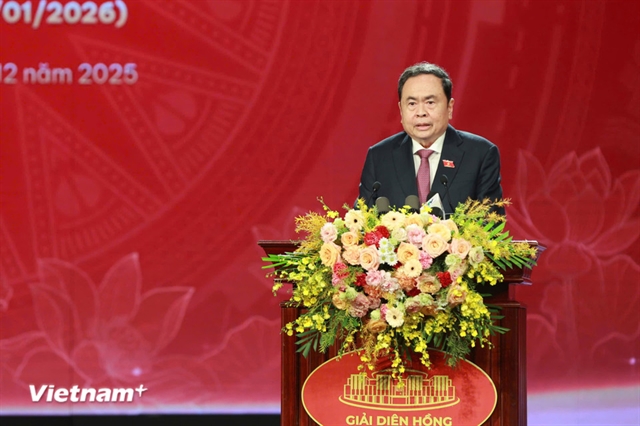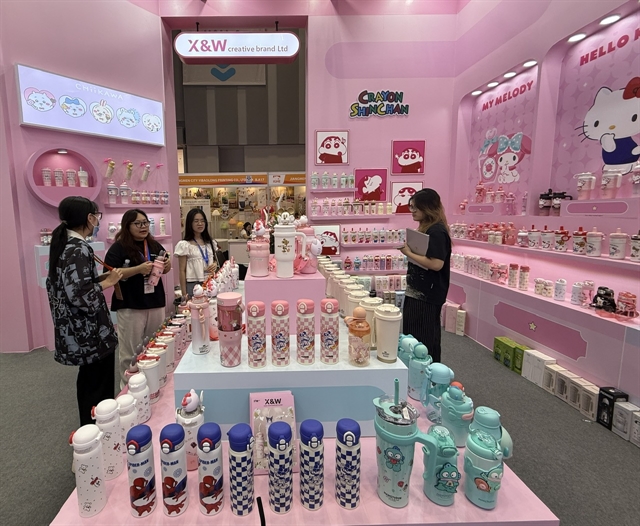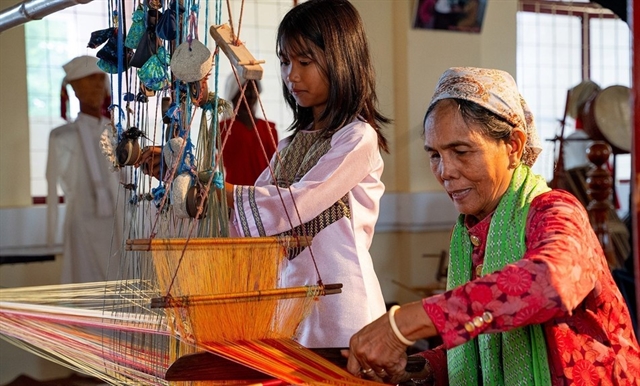 Features
Features
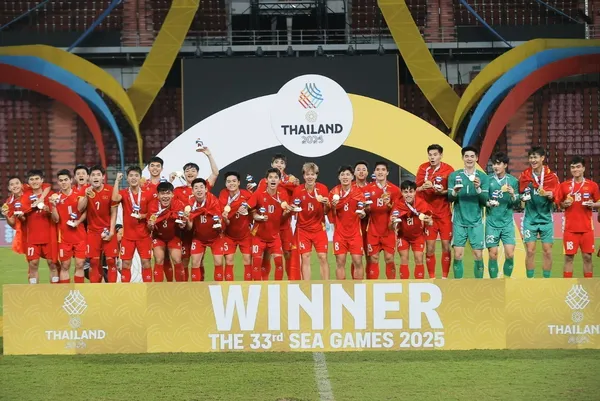
Infrastructure for seaports is still a headache for Việt Nam’s cruise tourism. Other than in Hạ Long, cruises still have to dock at ports designed for cargo ships.
 |
| Millennial passengers expect authentic experiences and check-in spots. VNS Photo Hồng Vân |
By Hồng Vân
Young UK tourist Sean Williams chose Việt Nam for his first trip to Asia in November, and revelled in the country’s rich culture and cuisine.
“My trip was amazing, I really enjoyed it. It was very different from what I’d been used to. Vietnamese culture is great. I like the way people are there, and how many of them live in the city but still all get along. The food is really good, everything I tried I liked. Really good food,” said Williams.
“I found it quite easy to find out about excursions and there were many tourist offices around offering trips and advice. People are generally very helpful if you need them. I love it there, can’t wait to be back,” he added.
With its scenic landscape, pristine beaches, fine cuisine and rich culture, Việt Nam has become a popular destination for tourists of different ages and cultural backgrounds and with diverse demands for travel.
In 2018, the country has welcomed more than 15 million international visitors, including around 400,000 who arrived on cruises.
The Asian cruise market has grown rapidly in recent years, providing a big opportunity for Việt Nam to take advantage of.
The country ranks fourth in Asia (after Japan, China and Thailand) this year in number of port calls.
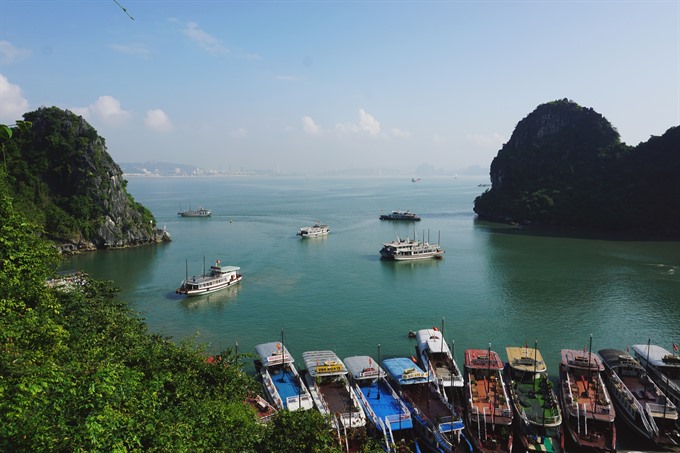 |
| Việt Nam has great potential for cruise tourism with scenic landscapes, pristine beaches, fine cuisine and rich culture. VNS Photo Hồng Vân |
Over the past few years, Việt Nam has developed a deep-water port system that enables big cruise ships to dock. The big ports include Hạ Long in Quảng Ninh, Chân Mây in Huế, Tiên Sa in Đà Nẵng and Nha Trang in Khánh Hòa, and are designed to receive ships and cruise vessel of 50,000 to 100,000 gross tonnes.
In late November, the Hạ Long International Cruise Port opened, making it the first passenger port for cruise ships in Việt Nam designed to accommodate vessels with a capacity of more than 8,000 people and able to serve two ships at once.
Việt Nam needs more specialised ports like this to accommodate the increasing number of tourists and cruises.
Infrastructure for seaports is still a headache for Việt Nam’s cruise tourism. Other than in Hạ Long, cruises still have to dock at ports designed for cargo ships.
Ahmad Kamal Bin Abdollah, manager of Cruise Port Development at NV Terminals in Malaysia, said: “Việt Nam is currently reliant on cargo terminals to provide cruise berths. Finding suitable locations for dedicated berths is not always easy. Often the solution in the near future is to mitigate the passenger inconveniences when berthing at cargo facilities.”
Some international cruises carrying thousands of tourists have been unable to dock in Việt Nam because the local ports were fully booked by cargo ships and there wasn’t a slot for passenger ships.
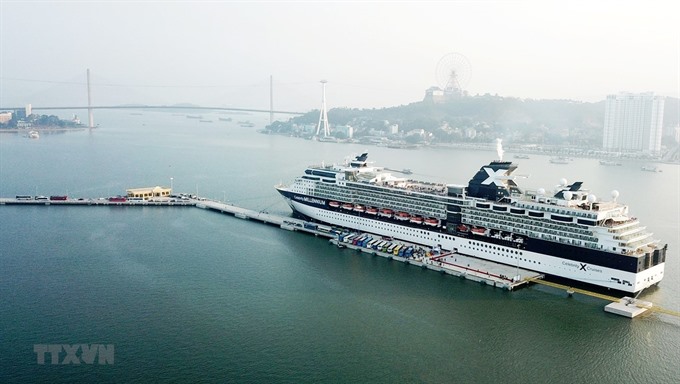 |
| Việt Nam should develop a seaport system that includes terminals, duty free shops, money exchange counters and entertainment areas. VNA/VNS Photo |
In mid June this year, a cruise carrying 4,800 people failed to dock at Phú Mỹ in Bà Rịa-Vũng Tàu. In September and October, two more ships (one carrying 2,800 people and the other 4,000) had to cancel their stop in HCM City.
The average cruise tourist is estimated to spend an average of US$100 per day.
"The unavailability of ports for cruises causes loss of money and loss of trust from international cruise lines," said Hà Bích Liên, a lecturer at the HCM City University of Pedagogy and a consultant for an international cruise company.
Many ports prefer to take in cargo ships because the charges are much higher than cruise ships.
The economic benefits from cruise ships may not outweigh cargo ship, but the number of cruise tourists can bring in higher income and improve the living standards of locals and help to promote the image of the country and its people.
At the seminar on cruise tourism development held in Quảng Ninh last week, representatives from the Việt Nam National Administration of Tourism (VNAT), travel agencies and cruise lines urged more investment in seaports, which should ideally include guest terminals, modern shopping malls and entertainment areas.
Vũ Duy Vũ from the Saigontourist Travel Service Company said investment was needed in building wharves and piers for passenger use, public utilities including money exchange counters, duty-free shops and toilets at ports.
Vũ said that more standard services including dining, shopping and entertainment should be added to meet the diverse needs of passengers. Signature souvenirs from each locality should also be on offer for cruise tourists, he added.
Abdollah said: “The cruise facilities must consider such criteria as the ability to serve the ships which include the water depth and channel access; the access to excursion sites including distance and modes of transport. They should also ensure the safe and efficient operating environment with supporting services and amenities.”
Unique tours
"The trends and demands of tourists are changing and becoming more diverse, so tour operators need to make each destination stand out and provide new high-end products and services," said Vũ.
Cruise tourists used to be mostly middle-aged or retired, but now the demographic is changing. The number of tourists travelling with friends and family has also been growing, with visitors arriving from all over the world. The number of Asian passengers, especially Chinese, outnumber other nationalities like American, European and Australian, according to VNAT.
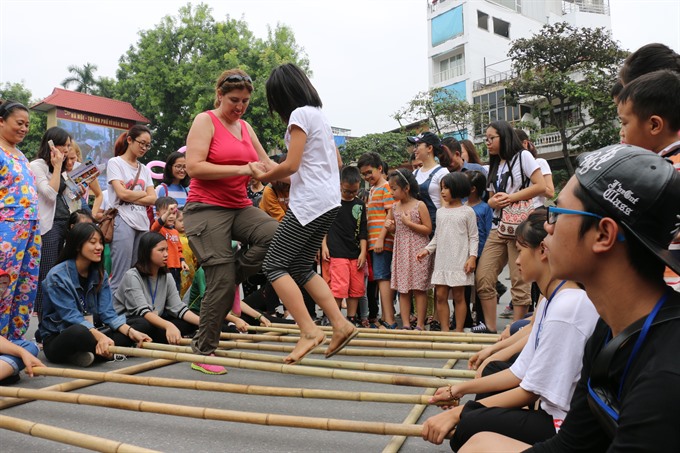 |
| Facilitating the interaction between tourists and local people is among the criteria for a good itinerary. VNS Photo Hồng Vân |
 |
| The first passengers board at the Hạ Long International Passenger Port in November. Infrastructure is still a headache for Việt Nam’s cruise tourism. Other than in Hạ Long, cruises still have to dock at ports for cargo ships. VNA/VNS Photo |
In terms of length of stay, cruise tourists tend to spend from 12 hours to 48 hours. These cruises also have at least two ports of call.
In addition, cruise travel is becoming more affordable with different budget options; therefore, the spending power and demand for tourism products and services on the same cruise varies, according to Vũ.
Passengers also expect beautiful landscapes, traditional crafts, daily life and the local culture and cuisine. Millennial passengers expect an authentic experience and check-in spots.
Manager Abdollah said: “Good destinations have a mix of excursions and on-shore activities to fill up a cruise visitor’s day. Where gaps appear at certain distances, especially at close distances, they should be filled by developing new sites.”
“Many destinations throughout Việt Nam have strong market visibility. There are several UNESCO heritage sites accessible via cruise excursions and the cities themselves are well known,” he added.
According to Vũ, to serve an increasing volume of passengers that can sometimes be up to 5,000 per cruise, it is important for tourism products and services to meet criteria such as giving tourists a fantastic experience or a sense of adventure and exploration, especially for high-end tourists; showcasing the landscape, history, culture, traditional arts, cuisine and shopping destinations of Việt Nam; facilitating the interaction between cruise tourists and locals; and being associated with the cultural events at destination ports.
“The fundamental challenge to Việt Nam’s cruise tourism remains facility construction," Abdollah said.
“Once facilities are improved, then other challenges such as diversifying source markets and building new itineraries with cruise lines can be handled at a more tactical level,” he added.
VN, a great market for cruise human resources
According to lecturer Liên, cruise ships employ a high number of staff, sometimes up to 1,800 people. These staff work on cruises for around five years before they quit life at sea to settle ashore.
“There is always a high demand for staff for cruise tourism, and Việt Nam can become a competitive market for human resources,” said Liên.
In order to grasp this opportunity, Việt Nam should lobby international cruise lines to open schools in Việt Nam to offer training for future staff, she added. VNS

.jpg)

